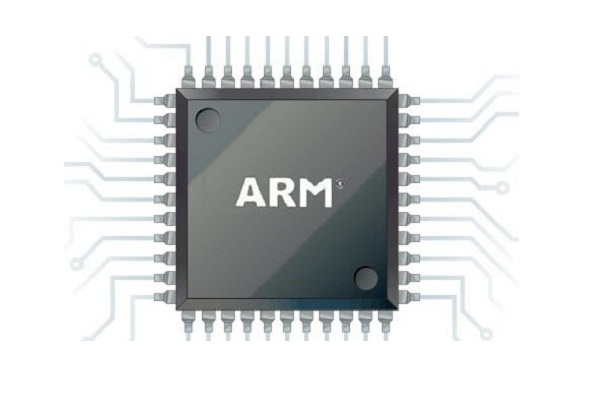ARM Strikes Java Optimisation Deal With Oracle

ARM is to work with Oracle on tweaking Java for its low-power 64-bit server processors
ARM officials are continuing to lay the groundwork for the company’s plans for a greater role in the data centre, reaching a multiyear agreement with software giant Oracle to expand the capabilities of Java Platform Standard Edition on ARM’s chip architecture.
ARM, which has worked with Oracle in the past to bring Java and its system-on-a-chip (SoC) architecture closer together, announced on 22 July that Oracle will further optimise Java SE for ARM’s current 32-bit designs and add Java SE support to 64-bit ARMv8 platforms.
Machine-to-machine environments
The agreement is not only aimed at such data centre systems as servers and networking systems, but also at machine-to-machine (M2M) environments, including industrial control, factory automation and single-board computers, according to ARM and Oracle officials.
 Expanding Oracle’s support for ARM’s technology will increase the software ecosystem that will be key as ARM looks to bring its low-power SoC architecture, which now is found in most smartphones and tablets, into the data centre, according to Ian Drew, chief marketing officer and executive vice president for business development at ARM.
Expanding Oracle’s support for ARM’s technology will increase the software ecosystem that will be key as ARM looks to bring its low-power SoC architecture, which now is found in most smartphones and tablets, into the data centre, according to Ian Drew, chief marketing officer and executive vice president for business development at ARM.
“The industry has reached a significant inflection point as enterprise infrastructure, including servers and network routers, is now able to leverage high-performance, energy-efficient ARM technology,” Drew said in a statement. “This extended relationship with Oracle to enhance Java SE is an important step in growing the ARM ecosystem, which is enabling businesses and consumers worldwide to discover new levels of energy efficiency and advanced performance.“
With trends like cloud computing, big data and mobility changing the kinds of workloads running in the data centre, enterprises and service providers are looking for systems that offer high performance, density and energy efficiency. ARM officials see an opportunity for moving their architecture into the dense, low-power microserver space, powering systems that can move massive numbers of small workloads.
The company – which designs low-power SoCs, then licenses those designs to the likes of Samsung, Qualcomm and Nvidia – already is seeing some partners, including Calxeda and Marvell Technologies, create server chips based on its 32-bit designs. In addition, Applied Micro also is working on a 64-bit ARM-based SoC.
ARMv8 on the way
However, it won’t be until next year that systems running on the ARMv8 architecture – which will feature such server features as 64-bit capabilities and greater memory and virtualisation support – will start hitting the market. It’s also when major chip makers – such as AMD and Samsung – will begin putting out 64-bit ARM-based SoCs.
The microserver space – a small but growing part of the larger server market – will be increasingly competitive. By the time the ARMv8-based systems are launched, Intel will be into its second generation of low-power Atom chips aimed at the space. Intel launched “Centerton” last year and later this year will release “Avoton”, which will be based on the new 22-nanometre “Silvermont” architecture, which promises greater performance and power efficiency.
In addition, AMD in May unveiled its x86-based Opteron “Kyoto” chips, also aimed at microservers.
However, Andrew Feldman, corporate vice president and general manager of AMD’s Server Business Unit, believes that ARM-based server chips could account for as much as 20 percent of the market by 2016. AMD, with its x86- and ARM-based SoCs and its energy-efficient server technology acquired in the deal last year for SeaMicro, will be a significant player in the space, Feldman told eWEEK in May.
A key factor will be the software ecosystem around the architecture, according to ARM officials. Lakshmi Mandyam, director of ARM’s Server and Ecosystems unit, told eWEEK in April that the company’s collaboration with partners has helped drive its dominance in the mobile device space and will be a key asset in the server market, as will the growing use of open-source technology in the data centre.
“Open source is the great equaliser,” Mandyam said. “I don’t think the gap [between ARM and Intel in server processor technology] is as much as you might think.”
Microserver growth
Top-tier server OEMs, including Hewlett-Packard and Dell, are moving aggressively into the microserver space, and will rely on Intel, AMD and ARM to power these systems.
According to ARM officials, the agreement with Oracle will help improve throughput, efficiency and scalability in multicore ARM-based systems. It also will help in such areas as boot-up performance and library optimisation, which are important for systems used in the data centre and embedded systems.
“By working closely with ARM to enhance the [Java Virtual Machine], adding support for 64-bit ARM technology and optimising other aspects of the Java SE product for the ARM architecture, enterprise and embedded customers can reap the benefits of high-performance, energy-efficient platforms based on ARM technology,” Henrik Stahl, vice president of Java product management for Oracle, said in a statement.
Do you know all about UK tech leader ARM Holdings? Take our quiz!
Originally published on eWeek.